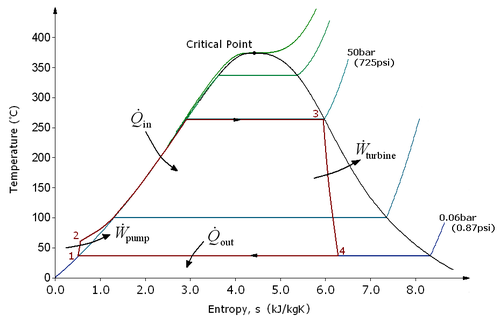Hai Sahabat blogger!!!
kali ini Saya memberikan informasi tentang Ebook Gratis yang bisa didownload oleh sahabat semuanya.
Siapapun yang lagi membutuhkan ebook-ebook dibawah ini ,Silahkan klik aja judul ebook nya!!!
1. Eletromagnetic William Hayt Book sixth edition[2001]
2. Renewable Energy
3. Ogata Control System Engineering 3th Edition
4.Ogata Control System Engineering 4th Edition
5. Ogata Control System Engineering 5th Edition
6.Teknologi Rekayasa Surya
7.Pengolahan Sinyal Digital dengan Pemrograman MATLab
8.Fisika untuk Sains dan Teknik jilid 2 [serway jeweet]
9.Mekanika Fluida
10.Termodinamika Teknik
11.Mekanika Klasik
12.Dinamika dan Mekanika untuk Perguruan Tinggi
13.Mekanika Fluida 1
14.Dasar-Dasar Getaran Mekanis
15.Panas dan Termodinamika
16.Essential MATLab [Brian D.Hahn]
17.Elementary Mathematical and Computa [C.G.Gibson]
18.Fundamental of Instrumentation [Dominique Placko]
19.Instrumentation and Application [John G. Webster]
20.Electronic Device and Circuit Theory seventh Edition [Robert L.Boylestad]
21.Finite element methods for electromagnetic [Stanley Humphries Jr.]
22.Digital Circuit Analysis and Design with an Introduction to CPLDs and FPGAs [Steven T.Karris]
23.Circuit Analysis with MATLab [Steven T.Karris]
24. Textbook of Electrical Technology vol.1
25. Textbook of Electrical Technology vol.2
26. Amphibionic Build your own Reptilian Robot [Karl William]
27. Basic Circuit Analysis 2th edition
28.C Programing for Microcontroller AVR , Joe Pardue & Smiley micros
29.C++ from the Ground up third edition Herbert Schildt
30.Calculus Varberg Purcell Rigdon 9 edition
31. Discrete Time Control System Katshuhik Ogata
32. Electric Machinery Fundamental Chapman
33. Electromagnetism for Electronic Engineering
34. Electronic Circuit Analysis 2nd Editin Dr.K.Lal.Kishore
36. Essential Electrodynamic 5th Edition Raymond Protheroe
37. Essential Electrodynamic 5th Edition solution Raymond Protheroe
38 General Chemistry 5th Edition James E.Brady
39.Mathematical Method for Physics a Concise Introduction
40. Practical Amplifier Diagram Jack Robin and Chaster
41. Process Industrial Instrument and Control Hand
42. Schaum Outline’s Programming with C 2nd Edition Byron Gottfried
43. Schaum Outline’s Mechanical Vibration
44Theory and Problem of Trigonometry 3rd Edition Robert E.Moyer and Frank Ayres
45. Simple Program Design
46. Phisics With Answer
47. Numerical Method for Engieering Chapra Canale
48. C++ Programming Language
50. Pemograman C dan Implementasinya
51.The PIC Microcontroller Your Personal Introductory Course Third Edition
52.PICMicro Microcontroller Pocket References
53. Fundamental Of C Programming
54. Barnett Embedded C Programming and the ATMEL AVR
55. Thomas Calculus 11th edition
56. Solution Manual Thomas Calculus 11th edition
57. M.R.Spiegel Vector Analysis Schaum series
58. Advanced Calculus and Analysis
59. Advanced Engineering Mathematics 10th edition
60. 1000 solved Problem in Classical Physics
61. Young and Freedman Solution Manual University of Physiscs 12 th Edition
62. Classical Mechanics Golstein
63. Solution Manual Classical Mechanics Golstein
64. Fundamental of Physics 8 th
kali ini Saya memberikan informasi tentang Ebook Gratis yang bisa didownload oleh sahabat semuanya.
Siapapun yang lagi membutuhkan ebook-ebook dibawah ini ,Silahkan klik aja judul ebook nya!!!
1. Eletromagnetic William Hayt Book sixth edition[2001]
2. Renewable Energy
3. Ogata Control System Engineering 3th Edition
4.Ogata Control System Engineering 4th Edition
5. Ogata Control System Engineering 5th Edition
6.Teknologi Rekayasa Surya
7.Pengolahan Sinyal Digital dengan Pemrograman MATLab
8.Fisika untuk Sains dan Teknik jilid 2 [serway jeweet]
9.Mekanika Fluida
10.Termodinamika Teknik
11.Mekanika Klasik
12.Dinamika dan Mekanika untuk Perguruan Tinggi
13.Mekanika Fluida 1
14.Dasar-Dasar Getaran Mekanis
15.Panas dan Termodinamika
16.Essential MATLab [Brian D.Hahn]
17.Elementary Mathematical and Computa [C.G.Gibson]
18.Fundamental of Instrumentation [Dominique Placko]
19.Instrumentation and Application [John G. Webster]
20.Electronic Device and Circuit Theory seventh Edition [Robert L.Boylestad]
21.Finite element methods for electromagnetic [Stanley Humphries Jr.]
22.Digital Circuit Analysis and Design with an Introduction to CPLDs and FPGAs [Steven T.Karris]
23.Circuit Analysis with MATLab [Steven T.Karris]
24. Textbook of Electrical Technology vol.1
25. Textbook of Electrical Technology vol.2
26. Amphibionic Build your own Reptilian Robot [Karl William]
27. Basic Circuit Analysis 2th edition
28.C Programing for Microcontroller AVR , Joe Pardue & Smiley micros
29.C++ from the Ground up third edition Herbert Schildt
30.Calculus Varberg Purcell Rigdon 9 edition
31. Discrete Time Control System Katshuhik Ogata
32. Electric Machinery Fundamental Chapman
33. Electromagnetism for Electronic Engineering
34. Electronic Circuit Analysis 2nd Editin Dr.K.Lal.Kishore
36. Essential Electrodynamic 5th Edition Raymond Protheroe
37. Essential Electrodynamic 5th Edition solution Raymond Protheroe
38 General Chemistry 5th Edition James E.Brady
39.Mathematical Method for Physics a Concise Introduction
40. Practical Amplifier Diagram Jack Robin and Chaster
41. Process Industrial Instrument and Control Hand
42. Schaum Outline’s Programming with C 2nd Edition Byron Gottfried
43. Schaum Outline’s Mechanical Vibration
44Theory and Problem of Trigonometry 3rd Edition Robert E.Moyer and Frank Ayres
45. Simple Program Design
46. Phisics With Answer
47. Numerical Method for Engieering Chapra Canale
48. C++ Programming Language
50. Pemograman C dan Implementasinya
51.The PIC Microcontroller Your Personal Introductory Course Third Edition
52.PICMicro Microcontroller Pocket References
53. Fundamental Of C Programming
54. Barnett Embedded C Programming and the ATMEL AVR
55. Thomas Calculus 11th edition
56. Solution Manual Thomas Calculus 11th edition
57. M.R.Spiegel Vector Analysis Schaum series
58. Advanced Calculus and Analysis
59. Advanced Engineering Mathematics 10th edition
60. 1000 solved Problem in Classical Physics
61. Young and Freedman Solution Manual University of Physiscs 12 th Edition
62. Classical Mechanics Golstein
63. Solution Manual Classical Mechanics Golstein
64. Fundamental of Physics 8 th



















 of that cycle. Increasing the temperature of the steam into the superheat region is a simple way of doing this. There are also variations of the basic Rankine cycle which are designed to raise the thermal efficiency of the cycle in this way; two of these are described below.
of that cycle. Increasing the temperature of the steam into the superheat region is a simple way of doing this. There are also variations of the basic Rankine cycle which are designed to raise the thermal efficiency of the cycle in this way; two of these are described below.








